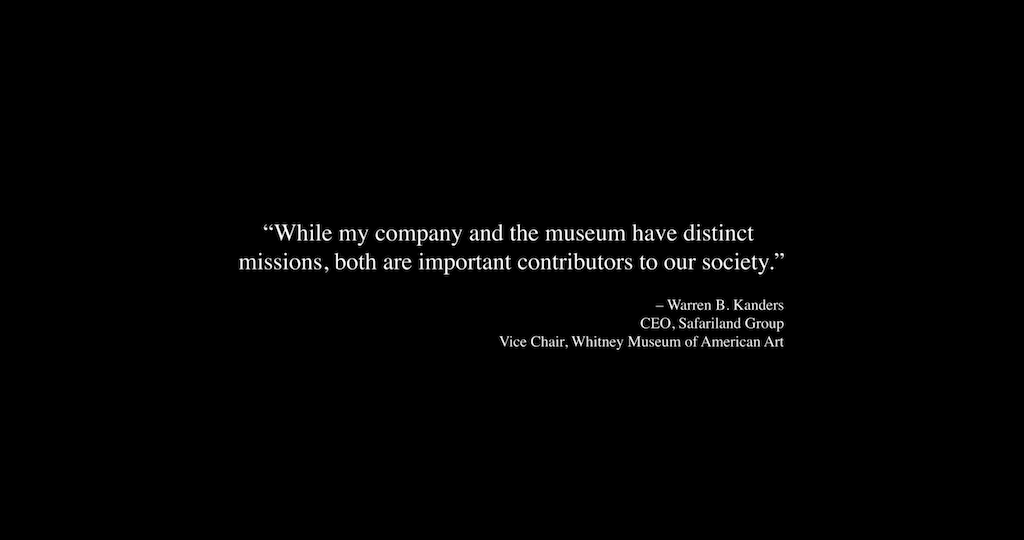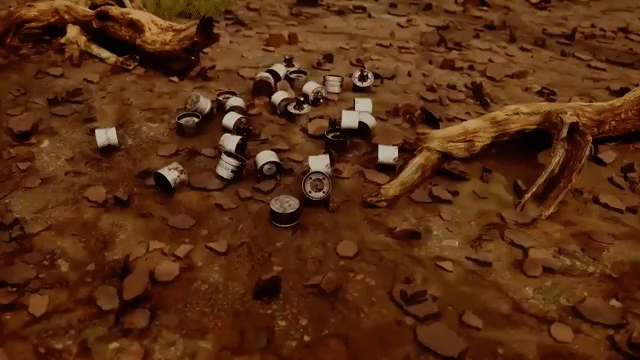Truth, Politics, Disintegration: Forensic Architecture at the Whitney
Nicholas Gamso
Triple-Chaser
How to recognize truth in an era of mass deception? How to even imagine truth as torrents of corrupt data, bogus narrative, and media junk matter crash all around us? To ask these questions is to propose a critique of media’s failure to uphold a basic public charter. Examples of such failure are innumerable—and they have been around for a long time. But in their wake a series of critical documentary and archival projects has emerged. Forensic methodologies and collaborative research projects not only reclaim the facts but reconstruct a broken public sphere, making new the compacts which give meaning to truth.
Forensic Architecture’s film Triple-Chaser is an exemplary case. The ten-minute film shows how the UK-based research group used digital imaging and data processing techniques to identify arms manufactured by Safariland, a company owned by Warren Kanders, vice chairman of the Whitney Museum of American Art in New York. Kanders’s company produced tear gas (deployed in grenade canisters called “Triple-Chaser”) used on migrants at the US–Mexico border as well as rubber bullets fired by Israeli Defense Force troops at protesting Palestinian civilians. By mining hundreds of image and audio databases, Forensic Architecture implicated Safariland in violence against civilians in a dozen countries. In its film, the group accuses Kanders of “aiding and abetting war crimes” in Gaza, where Sierra Bullets (manufactured by another of Kanders’s companies) were found at a site where the IDF massacred 154 Palestinians.{1}
Triple-Chaser, which was directed by Laura Poitras and narrated by David Byrne, shows how Forensic Architecture employed similar techniques to identify disused tear gas canisters in photographs of conflicts. In order to do this, technicians created “synthetic images”—masks based on product specifications from Safariland’s catalog—to develop machine learning adaptation programs. Volunteers in Tijuana, Bethlehem, and elsewhere go into the field to collect empty canisters, which are scanned, digitized, and classified using programs by the company NVIDIA, a leader in artificial intelligence and a key developer of technologies used to create deep fake videos.{2} Various technical challenges were overcome through experiments in programing and collaborative data processing, including the use of programs by NVIDIA. As Forensic Architecture says of these technologies, “‘fake’ images help us to search for real ones, so that the next time Safariland munitions are used against civilians, we’ll know.”{3}
Excerpt from TRIPLE CHASER (Forensic Architecture Lab, UK, 2019).
Triple-Chaser’s use of online repositories and open-source imaging software seems to actualize the astonishing capabilities of the digital as a medium for critical public interest journalism. Not only does the film showcase digital technology’s capacity to scan and sort millions of images, it also illustrates how communication infrastructures convene actors from across geographies. The film brought NGOs such as B’Tselem and the Omega Research Foundation into a network of art-activists that included MTL/Decolonize this Place, Chinatown Art Brigade, and W.A.G.E., as well as the art magazine Hyperallergic, which published statements from activists and covered the protests after Al Jazeera America broke the Kanders story.{4} Together, these groups highlighted the interlinked character of publishing, academia, digital organizing, contemporary art and design, even (in the form of Poitras and Byrne) the elite star power that pervades all these fields. The project confronted a complex of mediated institutional culture by mirroring that culture and replicating its networked organizational character. The film’s truth claims were enabled through computational power and the premise of institutional good will. Without patented software and massive visual databases, it would be impossible to know how to interpret the data or judge the veracity of the film’s content. Without the museum, there would be no arena for disclosure.{5}
Such conditions frame a style of relational documentary practice that, in its effort to reveal the truth, must also ask what truth is—i.e. whose truth, under what circumstances, produced to affirm what governing principles? By engaging a number of extant publics within and outside of institutional spaces, and by sending participants into ruined landscapes to retrieve tangible artifacts of political violence, Forensic Architecture called upon the people at large to reorder power and influence. Triple-Chaser in this way substantiates Hannah Arendt’s argument that truth of worldly significance is conceived only when evidentiary matter traverses public consciousness and animates political action. In response to the release of the Pentagon Papers in 1971, Arendt argued that meaningful truth could not simply be relayed through the specter of the smoking gun—never through the exposition of facts alone—but would have to be conceived with the aims of a world worth fighting for.
Warren Kanders’s eventual resignation from the Whitney board was proof that the facts gathered by Forensic Architecture and its network of participants had come to matter in an an institutional context normally granted special standing over the meaning of knowledge and its forms of acquisition. When it eventually forced Kanders out, in November 2019, the museum attempted to bring itself into line with a revised code of legitimacy. The crisis the museum faced was resonant with a more general impasse in liberal institutional culture, precipitated by new, medial forms of resistance and reconstruction.
****
Imagery Without Representation
One could say, citing what Hito Steyerl calls documentary’s “uncertainty principle,” that Triple-Chaser comes too close to its objects—too close to the financialized art institution, too close to the digital security state, and thus too close to the war economy that connects Gansevoort St. to Gaza and the West Bank.{6} The film’s critique of the Whitney was distorted both by the density of its visual transmission and by the fact that it was commissioned by the Biennial’s curators. It was not only Forensic Architecture’s findings that were threatened by this proximity, however. In replicating digital culture’s ambient conditions—flooded with data, imagery, and sensory effects—the film cast a net of uncertainty over the whole complex of documentation it represented. In this way, Triple-Chaser reprised a style of paranoid aesthetics that has for a long time been Poitras’s stock and trade. In several films and in ongoing journalistic collaborations, Poitras has adopted noirish formal conventions to demonstrate (with varying degrees of payoff) the absorption of data into a vast, state-controlled information infrastructure. Poitras’s films thus exhibit what S. Topiary Landberg has called “anti-representationalism.”{7} They overflow with mediated imagery, obscuring the facts themselves. The content is less the films’ findings, or even their arguments, than a recognition of their place within a greater system of positions and relationships.
Poitras’ films cast themselves as agents in a global field of power and thus imply that media has a boundless potential to produce the world beyond itself. Indeed, the films show the sedimentary quality of mediated information through the display of carceral structures that have sprung up to hold and process data. In Citizenfour—which tells the story of Edward Snowden’s publication of top-secret files on PRISM, the NSA spying program initiated by the Obama Administration—a series of long shots (produced with artist Trevor Paglen) exhibit black sites and server farms humming with discreet activity. In Poitras’s 2016 short Project X, made with Henrik Moltke, the object is a monolithic server tower in Manhattan that purportedly stores NSA data. Even as these mammoth constructions evince the scale of media and its infrastructures, they remain opaque in their actual operations. The images must be taken at face value, with Poitras (and Paglen) lending ethos to the scene. As Landberg points out, “those landscape images prove nothing about the existence of the data collection activities, which are themselves acts so enormous as to be unfathomable and potentially impossible to represent cinematographically.”{8}
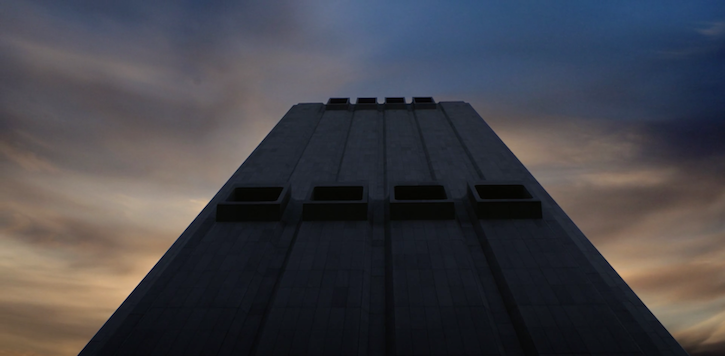 Figure 1. NSA’s surveillance hub in Manhattan. Excerpt from PROJECT X (Henrik Moltke and Laura Poitras, USA, 2016).
Figure 1. NSA’s surveillance hub in Manhattan. Excerpt from PROJECT X (Henrik Moltke and Laura Poitras, USA, 2016).
We can see a semblance of these tendencies in Triple-Chaser. The film’s relay and analysis of corroborating evidence (gunshots, tear gas) is overshadowed by the sheer speed and reach of digital computing in its capacity to classify and reconstruct. Although Byrne intones the basic research protocol in expository voiceover, the unfathomable processes of digital classification and machine learning are more memorably communicated through a show-stopping three-minute graphic sequence. Imaging masks in dazzling colors and patterns dance about the screen accompanied by a selection from Richard Strauss’ elegiac Vier Letzte Lieder (1948)—the cycle was performed at the opening of the Warren Kanders Stage at the Aspen Music Festival. The soprano’s soaring voice, combined with the abstracted shapes of the synthetic masks, is pleasing. Then it becomes alarming. As the music plays, Byrne reads aloud the symptoms of exposure to tear gas from the Triple-Chaser canisters’ medical handbook: “Severe allergic skin reactions, bronchial spasms, anaphylactic shock . . . danger of disturbed cardiac rhythm, danger of pulmonary edema.”
Excerpt from TRIPLE CHASER (Forensic Architecture Lab, UK, 2019).
Triple-Chaser’s use of sensory techniques is clearly an attempt to represent the physiological effects of tear gas. But the greater implication is that aesthetics and violence are intrinsically related. In an interview, Forensic Architecture founder Eyal Weizman describes the effects of tear gas as “a condition of hyperesthesia—overexposure to sensory stimuli.”{9} The violent sublimity in the film’s imaging sequence thus appears to take up the claim (made by Kanders and excerpted in Triple-Chaser as an epigraph) that while Safariland and the Whitney “have distinct missions, both are important contributors to our society.” The film turned this statement into a line of questioning: What motives do the two fields—art and munitions—share? Can we say that the logic of one field underwrites the other? And what is the character of a society which accepts such complicities? Weizman’s own architectural research has shown how aesthetic conventions associated with pastoral life and natural beauty, the traditional province of the sublime, have masked the aims of settler colonialism.{10} Does the hyperesthesia depicted in Triple-Chaser similarly evince the capacity of beauty to wage or to conceal violence over others? And, if the contrived pleasure of the image licensed the film’s status as an aesthetic object, was this not an indication that the democratic pretense of the museum is also a mask?
In provoking these questions, Triple-Chaser set itself in a kind of feedback loop. As the film adopted AI techniques from companies like NVIDIA, it shared in developing a predatory software. So did the film, through its reproduction of media excess, share in the condition of “info-glut,” confounding its display of evidentiary facts.{11} Then there is the matter of critique. Triple-Chaser, which was commissioned by Whitney curators, played into the museum’s perennial commodification of its own missteps and failures. The film and other works that thematized Kanders’s offences seemed conditioned by their concessions to neoliberal demands for professional visibility.{12}
While the film’s uses of visual and aural analysis evoke the history of critical documentary and media research, in other words, its overriding contradictions reflect some of the most salient themes in social practice—a genre of activist art that engages a public through participatory activities outside of the museum, yet which, in its effort to express a politics, tends to stumble over institutional entanglements. Here the entanglements are clear enough: the transgressions of NVIDIA, the influence of art celebrity, and the strategic cooperation of the museum. But despite these dilemmas, the film also offered an outlet to reparative creative action—another convention of social practice and indeed its saving grace. A set of emplaced collective activities involving hundreds of participants unfolded before and after the film’s installation in the gallery. These included data collection in various sites where Triple-Chaser canisters were deployed as well as the creation of a volatile political context around the Biennial. The protests at the museum, which were prodded and in some respects substantiated by the film, became inflection points for ongoing disputes over institutional power, collectivizing the call for Kanders’ ouster and drawing connections to scandal and predation across the art world.
Triple-Chaser’s public face comprised a series of collaborations between large groups of people, evolving alongside the contingencies of the moment. Yet this aspect of the film’s itinerancy was not in and of itself on display. Collaboration did not appear as the film’s aesthetic content or even as part of its forensic techniques. The film’s dazzling but extraneous use of hyperesthesia appeared in lieu of more substantive ideas. For what the filmmakers ultimately achieved—a politics, a network of publics— could never be sufficiently represented in a ten-minute filmic work. Its success was non-representational, in other words. It was rather a dynamic set of relational public practices. Such activities should be called upon to redeem Triple-Chaser’s institutional complicities and help us understand the political logics of media today.
****
Truth and Politics
A renewed claim to truth is at the forefront of critical documentary studies. After a generation of documentarians problematized the medium’s realist conventions, the uncertainty principle has become, in the view of some commentators, a tired preoccupation of the medium. Erika Balsom has suggested that this “phobia of facticity” is an effect of too much postmodern disavowal.{13} The hall of mirrors that came about through reflexive filmmaking and critical scholarship has coincided with all manner of deception in government, corporate media, science, and other areas. Now the situation has gone from bad to worse: we must be wary not just about talk of WMDs, but digital manipulation, social media aggregators (fake news), and a fascist wish to aestheticize reality.
In considering “the best response to the present emergency,” Balsom argues for a return to observational methods and critical rationality, appealing to what she calls a “reality-based community.” She refers, among other works, to Kevin Jerome Everson’s Tonsler Park (2017), which depicts the 2016 US presidential election from the emplaced viewpoint of a Charlottesville poling station, and Eric Baudelaire’s Also Known as Jihadi (2017), which tells the story of postcolonial warfare through protracted engagements with landscapes and infrastructure. I appreciate the attention Balsom devotes to partialities and obstructions in these works. “To see something clearly, fully, can easily slide into the mistaken assumption that it is known, comprehended in its totality,” she observes (citing Éduoard Glissant). I wish to echo this recognition of a documentary object’s illusory character, but also to add that many observational documentaries presume a consensual arena of reception and therefore constrain their potential as political objects.{14}
To make truth meaningful, whatever acts of disclosure take place on screen, a dynamic and recalcitrant public, or publics, must become involved. Only under such circumstances can the full democratic potential of documentary media come to light. The structure of publicity I invoke displaces individuated vision and redirects one-way channels of transmission. It moves the center of the documentary work away from the filmic interface and into the fields of production and reception. The public is not a singular narrative voice, but a polyphonic ensemble of participants. Attention to documentary politics should generate a new kind of public criticism as well—one in which the documentary object is not primary. Critical attention will be diverted from the singular work and focused on the circumstances and relationships that materialize around it. Projects such as Triple-Chaser are starting points for these interventions in documentary theory and practice. The film convened a transnational network of artists, activists, data scientists, journalists, and critics. Its energies proved continuous with a surrounding media ecology: the film circuited itself into extant systems of imagery, discourse, politics, and publicity, laying the groundwork for collective reconstruction. Following Balsom, we might call this a reality-based community. But it is the term community that must take priority.
Excerpt from TRIPLE CHASER (Forensic Architecture Lab, UK, 2019).
For Hannah Arendt, questions of truth and deception oblige some recognition of humans’ “relative freedom from things as they are.” Writing amid the fallout of the Pentagon Papers in 1971, Arendt made note that “the texture of facts in which we lead our daily lives . . . is always in danger of being perforated by single lies or torn to shreds by the organized lying of groups.”{15} Arendt characteristically took this political tradition of deception as grounds for a reparative reading of truth. She called attention to the ability of political communities to produce truth by creating public theaters of valuation and debate. These spaces are a fundamental condition for rational judgment—exactly what we need in order to perform politics or, as Arendt says in her classic definition of human action, “to start something new.” Truth cannot be spoken as the simple disclosure of “contingent facts,” but must be reconstructed through creative transformations, new deliberative cultures, new orientations with regard to the world. “Without the mental freedom to deny or affirm existence, to say ‘yes’ or ‘no,’” Arendt argues, “no action would be possible.”{16} What made Daniel Ellsberg’s action significant, in her view, was precisely that he made such a distinction, saying no to the mandated conformity in which he lived and worked. He modeled a human capacity for action so that others—in government and on the streets—could do the same.
Ellsberg’s action posed an enormous threat to administrative powers, which in Arendt’s account compromised a common world of appearance and threatened to cancel subjects’ ability to think.{17} At the time of Arendt’s writing, such powers included state bureaucracies and a few monopolistic private enterprises (some in the fields of research and development). Now power resides in global, financialized computing space, structured around zones, servers, semiconductor factories, and mobile receivers. Administration remains, in this sense, an engine of hyper-rationality: it turns reason against itself, mandating forms of standardized technocratic solutionism. Ellsberg showed how reason could be turned around again in an act of subterfuge. By tearing down a groundless but widely accepted order of truth, a recognition of different realities (including what we might think of as empirical reality) could begin to appear. The people saw new information and demanded new answers of their government—and, short of that, a new government.
But as the controversies surrounding more recent data breaches have shown, the outcomes of such transgressions are not always as intended. The release of information has at times been leveraged by governments in displays of state violence, redoubling authority through force. In a similar contortion, the cultural economy exerts institutional prestige as its mode of control, absorbing critique and commodifying protest. Nothing changes. Reason is turned around again. These activities present their own order of truth: a truth which is given and accepted, no matter its inconsistencies. But there are opportunities—“choke points,” in the words of some of the Whitney protestors—for another kind of truth to appear. The choice, as Arendt implies in her writings, is to make a distinction between these two ways of apprehending truth and deception: one which attains its authority from a sovereign source, and others which are insisted upon by the people.
****
Documentary Social Practice
In calling for a renewed, democratic reconstruction of truth, we must take into account technologies of capture, study, and display. While today’s digital media threaten to fully abstract these processes, they nevertheless call to mind earlier expressions of disembodied looking. The orbiting satellites which appeared in the postwar period to mediate life on Earth exemplified such representations’ spurious claims to truth and evidentiary knowledge. Arendt made note of the satellite optic in her introduction to The Human Condition, criticizing the “human surveying capacity” for “alienating man from his immediate earthly surroundings.”{18} Aerial perspectives, spliced footage from hand-held cameras, the exhibition of scientific metrics, and collective enterprises like the Magnum Photos Agency reflected new attempts to represent the world as a totality. Such an aesthetics was apposite to Cold War social investments, evading the threat of totalitarian thought-control by focusing on the supposed agency of the individuated viewer and reducing the document to a static object.{19}
While these modes of spectatorship supported institutional authority over knowledge, they ultimately failed to reduce the negotiated character of documentary artifacts. Filmmaker Harun Farocki has shown that major breakthroughs in photography and synthetic imaging could not, for example, affirm the empirical character of visual data. His film Images of the World and the Inscriptions of War (1989) shows how war photography eludes attempts to determine fixed meaning or locate evidentiary content. Even when an image or a film is meant to convey a total field of representation (for example an aerial photograph of the landscape), the visual evidence cannot by itself denote truth. It merely indicates the set of questions asked—and thus the attitudes and suppositions out of which an idea of truth had been expressed, divined, projected, or otherwise identified. In Images of the World, the elusive object is an aerial surveillance photograph of a Nazi death camp, captured by Allied powers but suppressed until after the war. The photo’s blind spot came from the narrow index of veracity the photograph was produced to represent: the photographers weren’t looking for the camp, and in fact hadn’t identified it in their initial analysis. In revisiting the photograph decades later, and immediately recognizing Auschwitz, Farocki imbues the image with an evidentiary quality it did not have when it was operative as a primary source in an original context.{20} Yet even in posterity, the view remains partial, contingent, and positioned.
Documentary matter such as photographs and video can of course support different ideations of truth over a protracted duration or across different environments. An object’s exhibition in a gallery, its integration into a video sequence, is part of its own singular history as well as the greater histories out of which it appears and into which it is placed. These histories have, in the context of liberal capitalism, been pitched toward speed and precision. Yet they remain mired in idealized representations of the past via the large archival trail they invariably produce. Such a diachronic condition proposes, in the words of Homay King, “a new reality on the cusp of existence that emerges in an interval of present time that is rich with past and future images.”{21} The ceaseless development of media technologies, each one leaving a vast and growing record, shows obvious destination for the practitioner’s work. In traversing space and time, documentary may instead provoke comparative, disputed perceptions. Such disputes frame the problem of truth as a political matter motivated by documentary practice and research.{22} Under such conditions, documentation becomes a medium for social practice—staking a share in the world’s common archive, provoking forms of active spectatorship and creative action. The role of the spectator or reader, as well as the role of the ethnographic subject, can be said (like the role of the critic) to be always developing in relation to a changing worldly context.
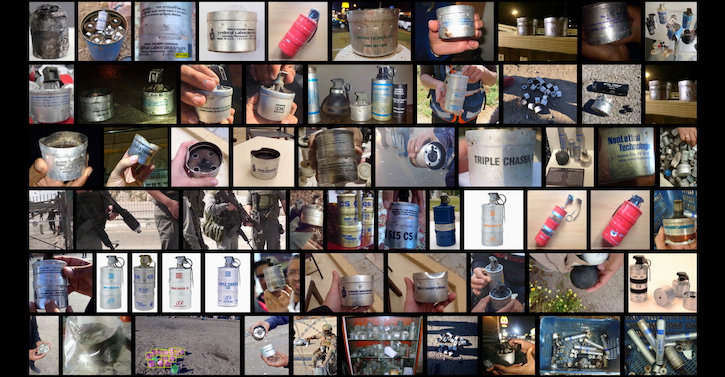 Figure 3. Images of Triple chasers sourced online. Excerpt from TRIPLE CHASER (Forensic Architecture Lab, UK,
2019).
Figure 3. Images of Triple chasers sourced online. Excerpt from TRIPLE CHASER (Forensic Architecture Lab, UK,
2019).
In evaluating the political character of an art or documentary practice, in other words, we must look beyond normative institutional space. To measure a work such as Triple-Chaser based simply on its screenings at the Whitney would be to ignore the way its participants went to the field to collect vital information. It would ignore the document’s use in court (to convict an Israeli soldier of manslaughter for his use of Safariland products against civilians). Such an approach might result in a failure to understand the film’s potential as pedagogy: works like Triple-Chaser train us not only to see, but to look again, with a critical eye, at framing devices and social context. A valid critical position on Triple-Chaser must also understand the film in light of the protests and demonstrations that occurred at the Whitney and which built upon the film’s revelations.{23}
****
Allegories of Matter & Media
Like all worldly practices, documentary production and research exist in a plastic relation with external matter. Documentary allegorizes the real, material qualities that it seeks to represent, conduct, and produce. I borrow the term allegory from Jonathan Kahana, who uses it to indicate the formalization of certain environmental conditions in modernist documentary cinema.{24} Kahana’s work concerns the way filmmakers visualized great planes and surfaces, but the digital forensics employed in Triple-Chaser do something different. The film comprises a multidisciplinary apparatus of extraction, which sources and mediates worldly matter—discharged tear gas canisters—through the embodied actions of participants. In routing these energies across platforms, bodies, and geographies, the film creates an allegorical matrix in which cinema’s mimetic function is multiplied and exacerbated. It remains difficult to tell whether these visual redundancies strengthen the existing power structure or aggravate its vulnerabilities. As TJ Demos has argued, the exponential capacities of AI, presented as animated imaging masks in Triple-Chaser, portend the “deathlessness” of the machine world amidst the slow disintegration of human systems. This omen occurs in light of Safariland’s centrality to what Demos calls a “global regime of climate control”—which is to say a world already conceived around processes of social death and debility.{25} Certainly the film’s sequences in Gaza and at the US–Mexico border show the extent to which destabilized ecologies inform the exigencies of activists and artists.
Yet a tremendous potential for political renewal arises from these conditions as well. The improvisatory actions of the film’s participants—made visible in the film via cutaways to the field—could be said to allegorize the remediation of social death and its desolated physical environments. Such potential echoes Arendt’s understanding of politics in which a modality of deconstructive work is performed so that something new can be actualized. As Arendt pointed out in her reflections on Ellsberg, “in order to make room for one’s own action, something that was there before must be removed or destroyed, and things as they were before are changed.”{26} The prospect of change is an outcome of such newness—a structure of alterity which shows itself in novel social and territorial encounters. Cecilia Sjöholm has described this in her writings on Arendt as the realization of “ontological plurality”: a “non-dialectical form of materialism” that supports the pluralism of any political community.{27} Ontological plurality is the condition of difference which underwrites all entities, and in particular all new entities—all changes, all repairs. Of course such plurality is the target of administrative inclinations, for it disrupts the normal course of things and thus stands in distinction to the forced accords associated with sovereignty. Politics, as Arendt argued, is a form of movement and multiplicity, while power is a form of stasis.
The most salient feature of the current crisis in liberal certitude is the emergence of ontological plurality as a sensible condition of worldly experience. Distended inequalities, eroding infrastructures, climate breakdown, predatory digital interventions —these conditions are beginning to percolate dramatically in ways that radically challenge liberal conventions of individuation, perception, consensus, and predetermined futurity. At stake in producing and negotiating the terms of the future is what mobilizes protesters to, in Arendt’s words, “pick up the power” lying about.{28} I interpret this phrase not only as a way for Arendt to signal the idea that power is achieved through collaborative activities, but that material conditions and extant ontologies may be creatively repurposed in expressions of of political volition. This is literally what people had to do in order to indict Kanders and to criticize his place at the Whitney, as Triple-Chaser shows. It was the act of “reporters, activists, inhabitants of Palestine and Ferguson picking up empty tear gas canisters with their hands and looking for a corporate logo”—a collaborative form of reconstructive world-making at a global scale with a large number of participants.{29}
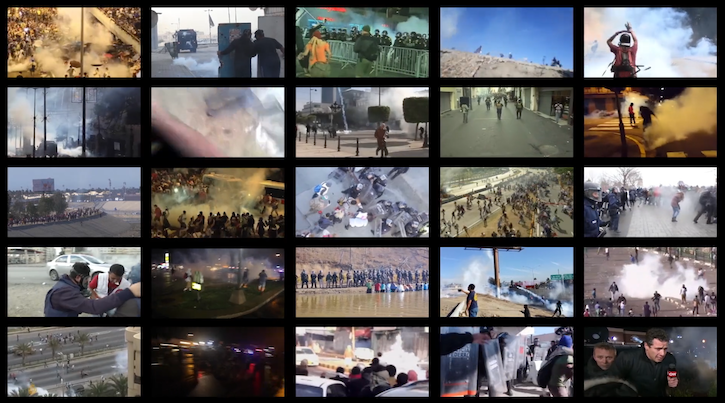 Figure 4. Global protests. Excerpt from TRIPLE CHASER (Forensic Architecture Lab, UK, 2019).
Figure 4. Global protests. Excerpt from TRIPLE CHASER (Forensic Architecture Lab, UK, 2019).
The imminent quality of such pluralistic political action is precisely what contemporary activism, social practice work, and engaged documentary media might strive to provoke. Here the artists and critics Hannah Black, Ciarán Finlayson, and Tobi Haslett—authors of an Artforum essay on the subject of the Whitney protests—express the character of such striving:
We know that it’s hard: hard to survive, hard to act. It’s hard to remain sensitive to horror in an art world bored by its own obscenity. The rapacious rich are amused by our piety, and demand that we be pious about their amusements. Against a backdrop of prestigious inertia and exhausted critique, it can be hard to marshal our most vital feelings: our anger, our love, and our grief.{30}
Triple-Chaser provided a flashpoint to marshal these most vital feelings. The politics of the film materialize beyond the singular ten-minute work of cinema, spilling into the channels of critical witnessing, reflection, activism, and world-making. It is this traversal of interdependent activities that licenses the prospect of political transformation in a nevertheless continuous (Arendt dares to say eternal) world. These lessons are important to remember because, although machine learning licensed Forensic Architecture’s work, it was the actions of those who picked up the disused tear gas canisters laying about the grounds of the Gaza and the US–Mexico border that ultimately made the film possible.
Even seemingly small actions have fomented a reckoning in the global culture industry. These actions operate together, appearing as what the architect Keller Easterling has called “dispositions”—conditions of imminence which press upon the surface of a system.{31} Through such actions, museums, universities, and philanthropic foundations might be creatively reimagined to make visible these underlying currents and thus to reconstruct their workings. The situation called to mind what another Whitney Biennial contributor, Augustina Woodgate (one of several artists who threatened to pull her work from the show), referred to as a goal of “collectively reclaiming autonomy in the process of disintegration.”{32} Woodgate’s work emphasized the erosive qualities of labor and power in the contemporary, prompting the arts reporter Zachary Small to ask: “How has the museum’s essential purpose shifted as the public grows cognizant of the inequitable relationships between money, power, and culture? And how has this great laboratory of democratic expression slowly eroded its own functional value, even as it purports to defend individuality and intellectualism?”{33}
Questions like these seem effective in providing the groundwork for the kind of democratic world-making that museums supposedly facilitate. But what if the ground has already fallen away? And what if it will soon? The part that seems most interesting to me is not that an enlightened space has been compromised by its criminal associations, nor that its pretense to democracy has faltered due to the institution’s role in exacerbating inequalities, but that even the museum’s financial architecture is threatened as a result of these overriding contradictions.
****
Autonomy and Disintegration
The call to reclaim autonomy amid disintegration could indicate a more general crisis of legitimacy—one which characterizes liberalism and which has cut across its claims to enlightenment, democracy, and progress. I make this point to answer a question I raised at the start: How can the hall of mirrors which today constitutes documentary, journalism, scholarship, and critique be opened into a new practice for constructing truth? How can an awareness of contingent facts be turned into something new? The aim may be what Alberto Toscano recently proposed—an idea that is analogous to the modes of reconstruction that are quickly (though perhaps not quickly enough) coming into focus. What we need is not mere recognition that another world is possible, he writes, but “a way of threading together those moments of mass action in which the powers that be have been put on the back foot.”{34} This form of reconstructive activity could actually follow from the deconstructive efforts of theory and recent inroads in curatorial practice, but it needs us (we critics, artists, media practitioners) to do the work.
Following the actions at the Whitney, we should be ready to take hold of institutions and radically reorient them. In doing so, we may view our work as part of a protracted effort to wrest the very bases of what we call truth from their origins in colonial research practice and to decolonize the terms of knowledge that have proliferated throughout modernity. This is no abstraction or metaphor, but a vital way of producing the world we want.
Background Video: Triple Chaser (Forensic Architecture Lab, UK, 2019).
{1} Safariland teargas has also been used to disperse demonstrators at recent protests against police violence across the United States, including in Lafayette Park, adjacent to the White House, when it was cleared by the Trump administration on June 1, 2020. On June 7, 2020, Kanders’s company announced that it would cease selling what it called “crowd-control solutions,” such as “chemical agents, munitions and batons to law enforcement and military agencies.”
{2} These dimensions of Forensic Architecture’s research practice are noted on the group’s website.
{3} See Triple Chaser, Dir. Laura Poitras & Forensic Architecture, 2019.
{4} See Decolonize this Place, “After Kanders, Decolonization is the Way Forward,” Hyperallergic, July 30, 2019. Anna Feigenbaum, “The Profitable Theatrics of Riot Control,” Al Jazeera America, May 2, 2015.
{5} See Aruna D’Souza, Whitewalling: Art, Race, and Protest in Three Acts (New York: Badlands Ltd., 2018).
{6} Hito Steyerl, “Documentary Uncertainty,” A Prior 15 (2007).
{7} S. Topiary Landberg, “Citizenfour and the Anti-Representational Turn: Aesthetics of Failure in the Information Age,” in Reclaiming Popular Documentary, eds. Christie Milliken and Steve Anderson (Bloomington, IN: Indiana University Press, forthcoming).
{8} Ibid.
{9} Alex Greenberger, “For Whitney Biennial, One Participant Targets Controversial Whitney Patron,” Art News, May 13, 2019.
{10} See Eyal Weizman, Hollow Land: Israel’s Architecture of Occupation (London: Verso Books, 2007).
{11} See Marc Andrejevic, Infoglut: How Too Much Information is Changing the Way We Think (Abingdon: Routledge, 2013).
{12} While Forensic Architecture, along with nine other artists, requested to withdraw the work, it nevertheless declined to institute a deadline. Later the group said it would have Triple-Chaser removed, but only after it had prepared a new work to be shown in its place. This new work, the group claimed, had enormous potential, for it offered the lynchpin in the case against Kanders—a Safariland bullet recovered in Gaza.
{13} Erika Balsom, “The Reality Based Community,” e-Flux 83 (June 2017).
{14} Nicholas Gamso, “Lifeworld of the Junkyard: Toward a Sensory Politics of Place,” ASAP/Journal 4, no. 2 (June 2018): 429-449.
{15} Hannah Arendt, “Lying in Politics: Reflections on the Pentagon Papers,” New York Review of Books, November 18, 1971.
{16} Ibid.
{17} See Hannah Arendt, The Origins of Totalitarianism (New York: Harvest, 1955).
{18} Hannah Arendt, The Human Condition (Chicago: University of Chicago Press, 1958), 251.
{19} In every case, intellectuals converged to determine a format to broadcast and exhibit these new representations. Progressive social scientists such as Margaret Mead and Gregory Bateson, for example, argued that documentary practice, in contriving a public, should invest in “apperceptive habits, (our) habitual ways of looking at the stream of events of which our own behavior is a part.” Quoted in Fred Turner, The Democratic Surround (Chicago: University of Chicago Press, 2013), 66.
{20} Images of the World and the Inscription of War, Dir. Harun Farocki, 1989.
{21} Homay King, Virtual Memory: Time-Based Art & The Dream of Digitality (Durham: Duke University Press, 2015), 13.
{22} Ariella Azoulay, “What is a photograph? What is photography?,” Philosophy of Photography 1, no. 1 (2010): 9–13.
{23} Judith Butler, Toward a Performative Theory of Assembly (Cambridge: Harvard, 2015), 16.
{24} See Jonathan Kahana, Intelligence Work (New York: Columbia University Press, 2008), 90-92.
{25} TJ Demos, “Climate Control: From Emergency to Emergence,” e-Flux 104 (November 2019).
{26} Arendt, “Lying in Politics.”
{27} Cecilia Sjöholm, Doing Aesthetics With Arendt: How to See Things (New York: Columbia University Press, 2015), 38.
{28} Hannah Arendt, “The Freedom to be Free,” in Thinking Without a Banister, ed. Jerome Kohn (New York: Schocken Books, 2018), 385.
{29} Hannah Black, Ciarán Finlayson, and Tobi Haslett, “The Tear Gas Biennial,” Artforum, July 17, 2019.
{30} Ibid.
{31} Keller Easterling, Extrastatecraft (London: Verso Books, 2014), 71.
{32} Quoted in Zachary Small, “The Apprehensive Politics of a Generation Surface at the 2019 Whitney Biennal,” Hyperallergic, May 15, 2019.
{33} Ibid.
{34} Tasos Tsakiroglou, “Interview with Alberto Toscano,” Efimerida ton Syntakton, July 21, 2019.




